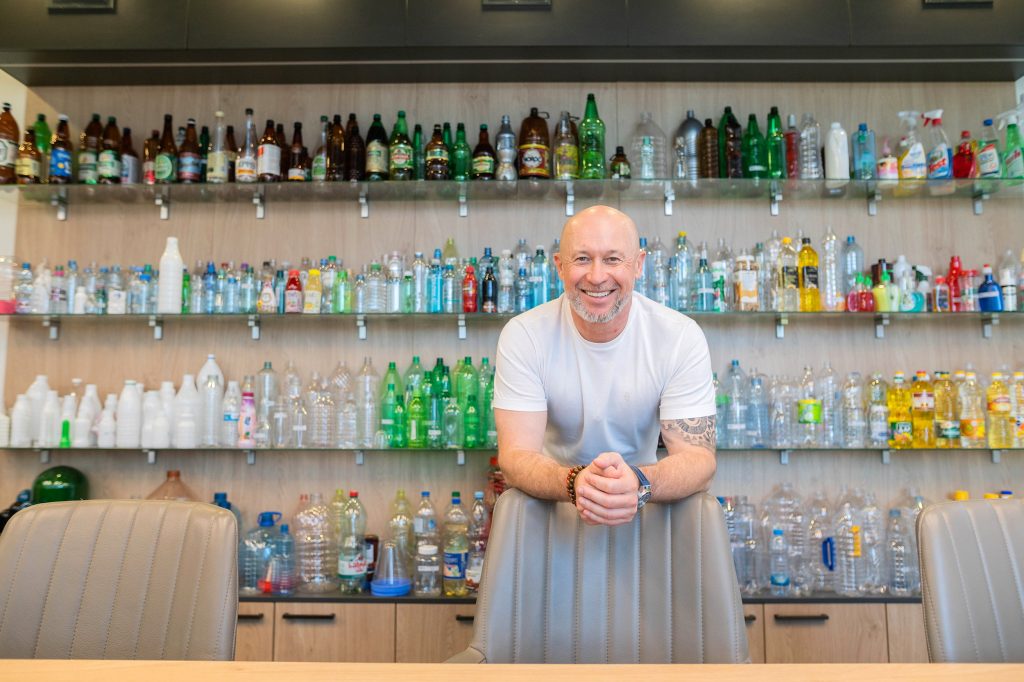HOW WE STOPPED LOSING TENS OF THOUSAND OF HRYVNIAS PER HOUR USING THE THEORY OF CONSTRAINS (TOC) METHODOLOGY

What most hinders the development of a company? Many different reasons can be cited, but one of the main ones is the leader's rigid thinking. I realized this from my own experience when, a few years ago, our company, Pet Technologies, became trapped in a vicious cycle: first we couldn't sell, then we couldn't produce, and then we were back to not being able to sell again, repeating the cycle.
We produce complex equipment. Due to the long production cycle, after signing a contract, we create a plan six months in advance. We sell, load production, and then suddenly discover that we can't fulfill the order on time. Conventional thinking in such a situation pushes us to increase the number of workers, machines, and inventory in stock. We increase production by 5%, but the problems remain—nothing changes in terms of speed. This is conventional thinking: to increase production and earn more money, we need to buy more machines and hire more people, which raises costs.Out-of-the-box thinking involves identifying the bottleneck in the production process where time, effort, and money are lost and focusing on addressing it.
It's impossible for a leader and their team to change their perspective on the process alone—they need external assistance. We were helped by consultants who specialize in implementing the Theory of Constraints (TOC) management methodology. This is a complex, multi-layered approach.
In simple terms, the essence of TOC boils down to two things. First: identify the "bottleneck" and improve its efficiency. Second: focus only on what needs to be done right now.
How did this work for us?
We identified the bottleneck and freed up resources.
Before the consultants arrived at the factory to assess the situation, I was advised to read the book "The Goal" by Eliyahu Goldratt, the creator of the TOC system. The book is beautifully written—in the style of a novel. The story follows a factory manager who gradually identifies and eliminates bottlenecks in production, ultimately saving the business and achieving excellent financial results. While the book is engaging, I felt that the concepts presented wouldn't work in our realities—I generally approach foreign practices with skepticism. In my opinion, the system effectively functions in the environment where it was created.
I was even more apprehensive about the consultants, who seemed like idealistic dreamers, disconnected from real production. Their plan, created after studying our situation, included many good ideas. However, I didn’t understand how they could be implemented in practice. My skepticism quickly dissipated when we began the search for the capacity constrained resource (CCR). This is the same "bottleneck" that hinders the process, regardless of the number of machines and people involved in production. Finding the CCR is not easy—it requires gathering a significant amount of statistical data. We searched for several weeks. Our bottleneck turned out to be a large milling machining center that we use for large parts.
According to TOC logic, this is the link that constrains the throughput of the entire company. The first step in addressing the bottleneck is to gather statistics. We assigned an employee to stand next to this machine, and for several weeks, he recorded data with a stopwatch in three columns: operating, being reconfigured, and idle. After a week, we reviewed this table. It showed that the machine was operating 30% of the time, being reconfigured 30%, and idle for 40%. At first glance, it didn’t seem like a big deal—until you start calculating the implications.Let’s take an average Ukrainian company with an annual turnover of 450 million hryvnias. One working hour in such a company costs 200,000 hryvnias. If 40% of working time is lost, that amounts to 80,000 hryvnias. Realizing this motivates you to do everything possible to reduce downtime (the machine will still have to idle—it cannot run continuously). However, if you can load it at least 20% more during those 40% of lost hours, you can cut losses in half. The first thing we did was optimize the reconfiguration process by ensuring that all necessary tools and equipment were readily available next to the machine.We assigned an assistant to the operator, who helps with loading and reconfiguring parts, taking care of all accompanying tasks so that the operator wouldn’t get distracted.
We discovered that the machine often idled due to the lack of drawings. Now, all drawings are kept on-site in two copies to prevent them from getting lost. If any technological questions arise, the worker can call the technologist using a button.
We also optimized lunch breaks—the supervisor eats right next to the machine while a large part is being processed (which takes about 20 minutes). If he needs to step away, the assistant monitors the machining process. For better control, we also installed a signal beacon on the machine and implemented a program that triggers a siren if the spindle is idle for more than five minutes. Additionally, we set up a camera that streams the machine’s footage to screens in my office, the production manager's office, and the executive director's office.
What did this achieve for us? We freed up about 5% of time previously spent on reconfiguration. Downtime was reduced by half—to 20%. At that time, the average production cycle for a standard machine was 90 days. Thanks to TOC, we shortened this period to 45 days.
We learned to focus solely on what was needed at that moment.
Another important principle of the TOC philosophy is to perform only those actions that are relevant at the moment.
What does this mean? It allows for a reduction in inventory levels, freeing up time and money to use them more effectively. A diagram is created to show when an order should be fulfilled. From this point, we calculate how much time is needed for each stage. For example, if assembly takes a week, all parts must be in place a week before shipment.
Parts for production should arrive in a month, a week, and three days, respectively. However, not all at once, as that creates stress in the system and chaos. Money is freed up—it is no longer tied up in inventory and can be used more effectively at the right moment.Of course, this causes some anxiety; the procurement team is worried, but we say, “Why worry? The delivery time is clear—two weeks, plus four days for a buffer. What’s the problem?” They respond, “What if something happens?” We reply, “When something happens, then we’ll discuss it.”
These changes were not easy for us, as we were used to working with plans set months, even six months, in advance.
A classic situation: a lathe operator has a task for 15 parts of one type, five parts of another type, and one part of various other types. How does he plan his work? Naturally, he will first make the 15 parts, then reconfigure for the five, and only then produce the single parts. It doesn’t matter that most of the first type of parts won’t be needed for another three months.
In accordance with the system's requirements, we implemented labeling for all drawings on the production floor. Black drawings indicate that work must be done immediately. Red signifies urgency, but not priority. Green represents regular work.
Previously, each worker had a large stack of drawings for one day, two days, a week, or even a month, and they would choose what was most convenient for them to do. Essentially, this should be managed by the supervisor, not the worker. The supervisor chooses and distributes the tasks to their workers, who then complete them without considering their relevance—that’s not their job.
Production becomes a black box: an order comes in, a machine is produced, but what happens inside is not understood by anyone. Some workers do what is needed today, while others work on what will be needed in a week.
Following the principles of TOC, we eliminated all old drawings and issued new ones according to color-coded priorities. It took six months for people to accept the new working model. The rule of “don’t work ahead; do only what is needed now” turned out to be the most challenging for our company and our employees. Some of them simply had to stand idle. If there’s no work, they do nothing.
Initially, workers' pay was linked to their output, but we switched to a fixed salary model. An experienced lathe operator with 20 years of experience said, “How can I stand idle? I won’t earn anything.” We responded, “You’re on a salary.” However, many struggled to accept this. Some even hid workpieces to keep themselves busy during downtime. We suggested they watch a film about the Theory of Constraints during their “idle period.”
They did not allow the team to bury the initiative
I quickly realized that success depends on the commitment of the leader. If the company’s leader doesn’t take control of the implementation and demonstrate its importance, nothing will come of it. I witnessed this with a colleague who distanced himself during the initial stage of the changes, saying, “Figure it out yourselves.” As a result, the team buried the initiative.
Understanding that the team might resist changes of this magnitude, I decided to personally attend all theoretical sessions and oversee the practical implementation. Every week, I, along with the production manager, foremen, and technologists, approached each machine and asked every worker: “What are you working on right now? Show me the drawings.” The worker would show black and red drawings. I would ask: “If you’re working on green and a red comes in, what will you do?” They would respond, “I’ll switch to red.” I’d clarify: “And if it’s black?” The answer was similar. If I had only come once or twice, nothing would have worked. I went there every week for six months. Each worker had to understand that this was not a joke and would be monitored down to the smallest details. Only then does innovation become not a temporary solution, but a philosophy of the company.
Results
We saw our first results after about six months. We managed to cut the production time for serial machines in half, reduce inventory in warehouses by at least 20%, and finally streamline the procurement process. We achieved all this without additional investments and without new machines. The key in TOC is to strictly adhere to the rules, without creativity or improvisation. For instance, regularly and meticulously collecting statistics, even though it is a tedious and uninteresting process.
If the statistics are collected incorrectly, you won't have data about the system's performance, and you can't identify the root causes of problems. It's essential to ensure that the constraint (ROG) doesn't shift elsewhere. This can happen if you loosen control over the processes and neglect the statistics.
We've been working with TOC for about ten years now. During this time, a lot has changed. For example, the products have become more complex, affecting the processes. There are things that can only be seen by outsiders who have a fresh perspective. That's why from time to time we invite consultants to help us recalibrate the process, tighten up where it has loosened, and break patterns that have formed—something that is inevitable both in production and in life.
